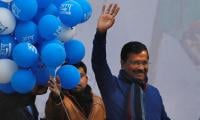Young Kaleem Ullah, who had come from Zhob to study in Quetta, was among the victims of the suicide attack that took place on Tuesday close to the Balochistan Assembly where self-serving members of the assembly were gathered for a vote of no-confidence against Balochistan Chief Minister Sanaullah Zehri.
Zehri was left with no option but to resign, to pre-empt the weather-cocks of his own party from stabbing the PML-N in the back. And this is not just to disrupt the Senate and derail the democratic transition. But, wait, the anti-climax is yet to come and might be beyond our imagination – and with far greater geo-strategic implications.
I am rather shocked at the self-serving stupid games various power groups and stakeholders are playing in a geographically strategic, ethnically alienated and divided, and persistently defiant province which refuses to be subdued by the fourth counter-insurgency operation. Is this the way we are putting our house in order in the face of heightening tensions with the sole superpower – by destabilising even the sham political edifice (that the exploited and deprived Baloch people find little hope in)?
Ever since the accession and annexation of the Kalat state, Balochistan’s integration into the so-called national mainstream has remained problematic. Rather than democratically and inclusively resolving the dichotomy of the centre-periphery incompatibility, authoritarian forces continued to act in a naked coercive way. Consequently, rather than integrating and voluntarily assimilating the Baloch people into the nation-building project, we have continued to deepen the estrangement and alienation of our Baloch brothers and sisters and relied on parasitic tribal chieftains to keep the oppressed Baloch masses under double subjugation.
In an inverse pyramid like ‘development’ model, two cores of Karachi and central Punjab continued to thrive at the cost of the periphery, which has continued to supply raw materials, natural gas and agricultural surpluses to subsidise the urban sectors while living on the wages of marginalisation. From the creation of ‘One Unit’ to the successive military operations, the Baloch and other marginalised ethnic groups have continued to suffer for ‘integration’ that has, consequently, deepened the gulf between the ‘strong centre’ and the smaller provinces. In a kind of ‘modernist-burden’, the integrationists have continued to play on the paranoia of separatism, and have cast aspersions on ethno-lingual nationalists as agents of external enemies.
It is true that previously Afghanistan, the Soviet Union and India did raise the bogies of Greater Balochistan and Pakthunistan, and now the Americans, Indians and Afghans seem to be fiddling with separatist tendencies. Forced by repressive policies and military operations, sections of nationalists did accept support from wherever they could get. This dynamic resulted in two opposite narratives, however exaggerated they might have been.
The fact is that neither did the Pakistani state succeed in suppressing the democratic aspirations of the Baloch people, nor could the nationalists achieve their separatist delusions due to an exceptional demographic scarcity in an extremely disproportionate geographic spread. The Baloch do claim to be a nation, and they have a right to say so, but they are fragmented on tribal-lingual lines and their growth as a nationality is stunted by an archaic tribal-feudal social formation and primitive modes of production.
For almost 70 years, the Pakistani state failed to address the political, existential and economic aspirations of the Baloch people who refused to be subjugated. Unlike the more mature Bengali nationalism, the Pakhtuns’ dual-nationalism for privileges on both sides of the Durand Line and Sindhi linguistic nationalism consummated by federalism, Baloch nationalism is essentially honour-based. No amount of repression can browbeat them.
Interestingly, all the Baloch nationalist parties have been at the forefront of the struggle for equal rights of all the nationalities of Pakistan, a federalist democratic structure and a secular polity. And the leaders of these parties continued to suffer at the hands of both civilian and military authoritarian rulers. A regressive counter-strategy introduced sectarian militancy to neutralise the nationalist resistance, as if this menace is not already threatening the very cohesion of our social fabric.
Paradoxically, Baloch nationalist leaders and tribal-chieftains have been shifting their positions in pursuit of their tribal rivalries. The most glaring example was of Nawab Akbar Bugti who became the hangman of the first Baloch nationalist government of Sardar Attaullah Mengal. In his martyrdom at the hands of the arrogant General Musharraf, Bugti became yet another catalyst for the Baloch insurgency. Ironically, if one of the icons of a tribal chief raises the banner of separatism, his other offspring joins the bandwagon of a lucrative counter-insurgency, such as the Bugtis, the Marris and the Khans of Kalat. It is a no-win situation in a zero-sum game.
Once again Balochistan is on the radar of international and regional rivalries. With CPEC focusing on a long coastline and centred on a free port at Gwadar – and with a possible Chinese naval post nearby ala Djibouti – rival powers are bound to react. With US-Pak relations at their lowest ebb, President Trump’s refusal to certify the nuclear deal with Iran, the US-India aversion to CPEC and the Saudi-Gulf increasing rivalry with Iran, Balochistan is going to become one of the focal points for various rivalries.
As the restive local Baloch population feel left out of the grand ‘game changer’, their resentment is bound to erupt, especially when various international actors are inclined to fish in these troubled waters. If viewed in this context, where does one place the crisis of the Balochistan government?
The PML-N-PkMAP-NP coalition and the agreement between a Punjabi prime minister and the nationalists in Balochistan to have half-tenures which would be rotated between the nationalists and integrationists was the best thing to happen in Balochistan. A political solution to the insurgency could have been found had this coalition been allowed greater space and freedom to negotiate with the separatists.
During Dr Maalik’s government some moves were made, but they couldn’t move ahead. Chief Minister Zehri also tried that with the Khan of Kalat in exile, but that effort was also subverted. It must not be forgotten that the current members of the assembly from the Baloch belt could get few votes as the boycott by the nationalists was quite effective. The maturity of our helmsmen can be judged by their manipulation of even a nominal representative facade in Balochistan.
Let the PkMAP, NP and steadfast sections of the PML-N – not the renegades – come up with a reliable chief minister and foil this conspiracy. Perhaps we have not learnt lessons from our past since we continue to play old tricks with the people of this land.
The writer is a senior journalist. Email: imtiaz.safma@gmail.com
Twitter: @ImtiazAlamSAFMA
The post-election situation will be troublesome and worrisome for Modi
Most favourable concept developed so far revolves around public-private partnerships
There is only one way forward: cut non-development expenditures, including non-combat defence expenditure
The plan aims to ensure financial stability, control inflation, and promote economic prosperity
Currently, a staggering 60 per cent of government revenue is being wasted on interest payments
It seems that Beijing’s goodwill, stronger financial stature, principle of non-interference in domestic affairs and...







